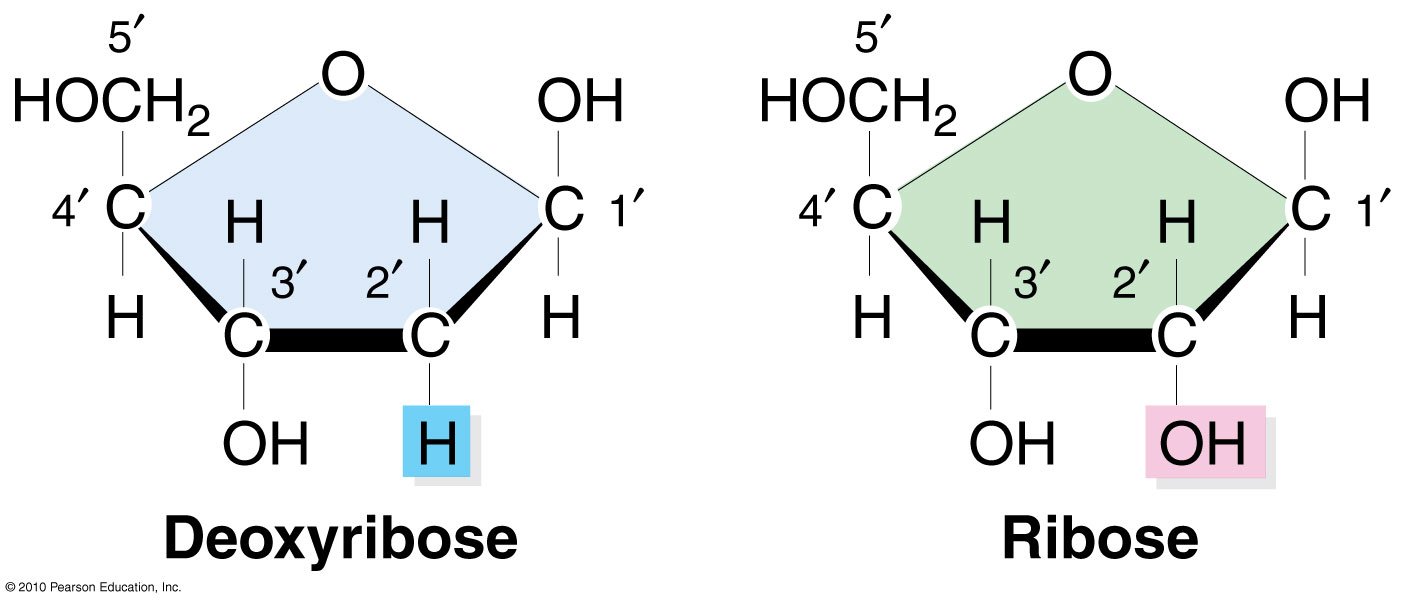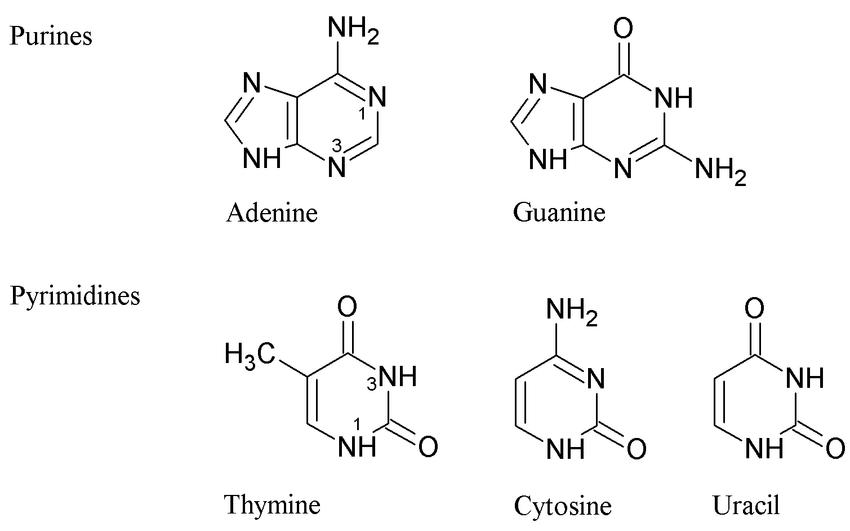Home » EasyHSC | Australia’s Best HSC Preparation Resources » EasyBio | HSC Biology Studies » Heredity » Cell Replication » DNA Replication using the Watson and Crick DNA Model
DNA Replication using the Watson and Crick DNA Model
Before jumping into the Watson and Crick DNA Model, we’ll need to know the chemical composition of DNA as well as some terms used in the context of Watson and Crick Model which have been described in brief below:
- The DNA molecule is composed of the following chemical components:
- Sugar:
- A 5-carbon sugar known as Ribose sugar is present in nucleic acid in two different forms. In DNA, the sugar is known as De-oxyribose sugar because an oxygen from carbon at second position is missing.

- Nitrogenous Bases:
- These are nitrogen containing compounds having basic properties. There are 5 types of nitrogenous bases out of which only four types are present in DNA. The 5 nitrogenous bases are: Adenine (A), Guanine (G), Cytosine (C), Thymine (T) and Uracil (U). Adenine (A), Guanine (G), Cytosine (C), Thymine (T) are present in DNA. In case of RNA, Thymine is replaced by Uracil (U).

- Phosphoric Acid: H3PO4 react with the nitrogenous bases in the DNA molecule.
- Sugar:

- Nucleotide: It is the simplest structural unit of DNA molecule consisting of a deoxyribose sugar, any nitrogenous base and phosphoric acid bonded together. When a large number of nucleotides form a chain, it is known as a polynucleotide chain.
The Watson and Crick DNA Model:
- DNA molecule contains two polynucleotide chains twisted around each other about a common axis forming a double helix.
- The sugar-phosphate backbone remains towards the outside of the helix projecting the four types of Nitrogenous Bases, Adenine (A), Guanine (G), Cytosine (C) and Thymine (T) towards the inside of the helix. Adenine (A) and Guanine (G) are purines and Cytosine (C) and Thymine (T) are pyrimidines.
- The two DNA strands are associated together by Hydrogen bonds between the purine and pyrimidines. A and T are linked with two hydrogen bonds whereas, G and C are held together by three hydrogen bonds.
- The bases are stacked on top of each other and the DNA molecule is stabilized by hydrophobic interactions and Van Der Walls forces between the stacked bases.
- The two strands are anti-parallel. One strand runs from 5’→3’ direction and the other strand runs from 3’→5’ direction.
- The double helix has a wide major groove and a shallow minor groove.
- The distance between each nucleotide is 10Ao and the length of each turn is 34Ao. Each turn contains 10 nucleotide base residues.
- The diameter of DNA is 20Ao.


Process of DNA Replication:
- “Ori” is identified which will be the site of initiation of DNA Replication.
- Uncoiling of the DNA double helix is very important because as long as the helix is coiled, different replication factors and enzymes will not be able to attach with the helix to continue replication. An enzyme called Topoisomerase facilitates in unwinding the double helix.
- Helicase enzyme breaks the hydrogen bonds between the nitrogen bases creating a replication fork. The helix is now separated and each strand acts as a template for the new strands that will be synthesized during replication.
- Primase enzyme adds primers to the template strands which contains an open -OH in the 3’ end for adding new nucleotide triphosphates.
- DNA Polymerase enzyme adds new nucleotide triphosphates to the open ended -OH in 3’ end. DNA Polymerase also checks for mismatches during base pairing (A paired with C instead of T or T paired with G instead of A etc.) and fixes them so that there is no error during replication.
- The strand which is complementary to the 5’→3’ template strand is known as leading strand. The synthesis of the leading strand is simple and it proceeds towards the replication fork in the 3’→5’ direction.
- The strand complementary to the 3’→5’ template strand is known as the lagging strand. The synthesis of the lagging strand is somewhat complex compared to that of the leading strand and occurs in fragments. Each fragment has its individual primer to start with having an open 3’ -OH end with which new nucleotide triphosphates are added. Later on, these fragments are joined together to create a complete strand.
- Once the new DNA strands are synthesized, Exonuclease enzyme removes the primers.
- Finally, DNA Ligase joins the new strand and the template strand and the helical structure of the DNA is restored.
- DNA Replication is a Semi-Conservative process because one strand of the double helix comes from the parent and one is newly synthesized.

Extract from HSC Biology Stage 6 Syllabus. © 2017 Board of Studies NSW.


